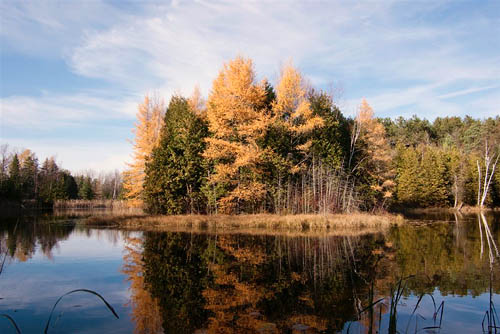Camera Lenses: a Crash Course
Page 3. Version 1.0, ©2008 by Dale Cotton, all rights reserved.
Focal lengths 3: which to buy?
I mentioned that a typical kit zoom lens covers focal lengths from 27 to 82mm-e. This covers moderate wide angle, normal, and short telephoto up to the start of the portrait range. In other words this range covers all the most commonly used focal lengths, making such a lens the only one many people would ever need. Going wider than 27mm-e or so – into ultra-wide territory – introduces ever more of a peculiar fish eye distortion. It's interesting and novel but is ultimately a special effect.
Going longer than the portrait range of telephoto is useful for capturing subjects that one cannot easily get close to, such as birds in a tree or a building across a river ... or a politician surrounded by security. But there are several problems, or at least challenges. One is that the longer the focal length the more the slightest vibration is magnified, so a tripod or other support pretty much becomes a necessity. Another is that something called depth of field (DOF) becomes shallower the longer the focal length, and this means that less and less of the scene will be in focus. (Yes: shallow DOF can be considered a benefit rather than a liability in many cases, as we see in Fig. 5, below.) Yet another issue is that the familiar change in proportion of objects that are nearer or farther away is diminished. If we look at a receding line of telephone poles with the unaided eye, one that is twice the distance of another will appear up to half the size of the closer pole; but viewed through a telephoto lens this decrease in size will be less pronounced the longer the focal length being used.

Fig. 5. Hummingbird, Pentax K10D + 300mm, © Guyland Ziebert, 2008, all rights reserved
Given all the above, here are some of the most common applications for various focal lengths:
- 5 – 25mm-e (ultra-wide angle): special effect and architectural interiors
- 28 – 40mm-e (moderate wide angle): used to include a broad portion of the entire scene into a single picture; when the camera is close to the subject, such as in a crowd, creates a feeling of the viewer being in the midst of the action
- 40 – 60mm-e (normal): used when the photographer wants the visual experience of the picture to match the unaided eye
- 85 – 135mm-e (portrait): used for portraits and in general to concentrate attention on a single object (or group of objects) in the visual field
- 135mm-e + (telephoto): used to reach far subjects.

Fig. 6. Autumn Island, Pentax K10D + 12-24mm, © Guyland Ziebert, 2008, all rights reserved
Landscape lens: A common question on photography forums is which focal length or lengths to buy for landscape photography. The answer is that all focal lengths can be put to use, but the range around normal, from very roughly 25mm-e to 100mm-e is going to cover a large majority of situations. Some landscape photographers tend to concentrate on the wide angles and some tend to concentrate on the portrait focal lengths, but most will use the wide angle to portrait range fairly evenly.